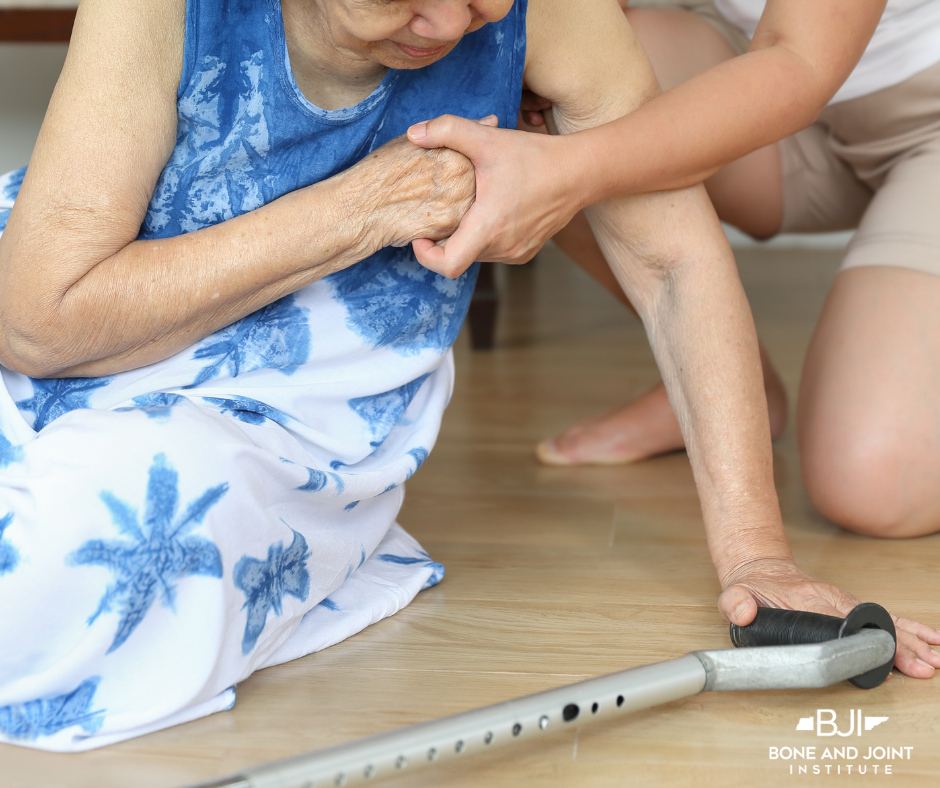Call Us: 615-791-2630
Fall Prevention

According to the Centers for Disease Control, one in four Americans, age 65 and older, falls per year, making falls the leading cause for fatal injury in older adults. In addition, falls are the most common cause of non-fatal, trauma-related hospital admissions and can have a devastating effect on the quality of life, resulting in limited social and family activities, physical decline, and depression, among others. To prevent falls, we must look at a few different factors. These include a review of one’s medications, identifying a cause of previous falls, identifying health conditions that could cause falls, and encourage mobility.
REVIEW OF MEDICATIONS
Review of medications for side effects and interactions that may increase a person’s risk of falling.
- To help with fall prevention, a doctor may consider weaning patients off medications that create fatigue, affect muscular strength, increase dizziness, or affect a patient’s ability to think/plan.
IDENTIFY THE HISTORY OF CAUSES OF PAST FALLS
This may help a health care practitioner to identify specific fall-prevention strategies.
IDENTIFY ANY HEALTH CONDITIONS THAT COULD CAUSE A FALL
These may include: poor vision, vestibular/inner ear disorders, joint pain, shortness of breath, decreased sensation in lower extremities, decreased muscle strength/endurance, poor balance, altered gait patterns.
ENCOURAGE MOBILITY
Physical activity levels can be directly related to decreased fall risk. Even gentle exercise that involves slow movement can increase strength, balance, coordination and flexibility.
- Physical therapists can create a custom exercise program aimed at improving balance, flexibility, muscle strength and gait.
- The goal would be to establish an independent home exercise program that someone can continue on their own, with the assistance of a family member or personal trainer, or even in guided exercise classes (Tai Chi, Boxing, etc.) or dance classes.
In addition to a fall prevention program, consider the following:
PROPER FOOTWEAR
High heels, floppy slippers, and shoes with slick soles can make you slip, stumble, and fall. So can walking in your stocking feet. Instead, wear properly fitting, sturdy shoes with nonskid soles.
REMOVE HOME HAZARDS
Taking a few minutes to review your home environment can be one of the most important things you do. To make your home safer:
- Remove boxes, newspapers, electrical cords, and phone cords from walkways.
- Move coffee tables, magazine racks and plant stands from high-traffic areas.
- Secure loose rugs with double-faced tape, tacks, or a slip-resistant backing — or remove loose rugs from your home.
- Repair loose, wooden floorboards, and carpeting right away.
- Store clothing, dishes, food, and other necessities within easy reach.
- Immediately clean spilled liquids, grease, or food.
- Use non-slip mats in your bathtub or shower.
- Use a bath seat, which allows you to sit while showering.
LIGHT UP YOUR LIVING SPACE
Keep your home brightly lit to avoid tripping on objects that are hard to see.
- Place night lights in your bedroom, bathroom, and hallways.
- Place a lamp within reach of your bed for middle-of-the-night needs.
- Make clear paths to light switches that aren’t near room entrances. Consider trading traditional switches for glow-in-the-dark or illuminated switches.
- Turn on the lights before going up or downstairs.
- Store flashlights in easy-to-find places in case of power outages.
USE ASSISTIVE DEVICE
- Use the least restrictive assistive device necessary to keep safety
- Use rails for both sides of stairways
- Nonslip treads for bare-wood steps
- A raised toilet seat or one with armrests
- Grab bars for the shower or tub
- A sturdy plastic seat for the shower or tub — plus a hand-held shower nozzle for bathing while sitting down
REHABILITATION/EXERCISE (SHOULD BE PERFORMED WITH A SKILLED CLINICIAN)
Focus on exercises that target various areas of the body
- Leg strength (knee extension, knee flexion, hip abduction, standing squats, sit to stand and return, toe/heel raises),
- Balance (single leg stand, tandem stance), and
- Walking performance (backward walking, turning, heel walk/toe walk).
- Can also incorporate multi-tasking, ADL planning, and practice, maintaining a base of support, safe transfer techniques, adaptive equipment, assistive device training.
Physical therapists can help guide you through a fall prevention program, working on strength, balance, assistive device training, transfer techniques, and education. For more information on physical therapy and our Rehabilitation Services Department, visit Rehabilitation Services or call 615-791-2640.
